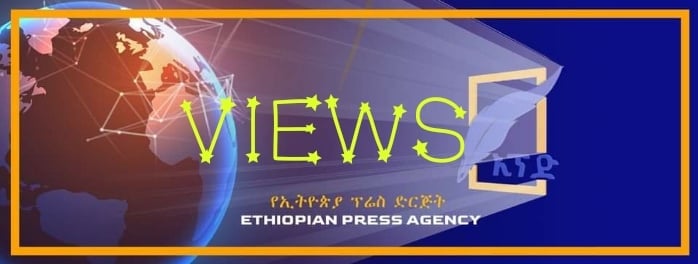
BY GETACHEW MINAS
Illicit financial flows out of Ethiopia are not well researched. This situation calls for more research on the mechanisms used for capital flight to better understand the measures that should be taken to effectively block these flows from the country. In this context, wide range of effective measures to curb corruption and illicit financial flows are assessed in the international literature. These financial flows have pervasive effects on developing countries’ social and economic development. In many countries the volume of financial outflows “exceeds” the inflows of aid and foreign direct investment. This is possible due to corruption, money laundering, tax evasion and avoidance. These channels of funding may end up in the hands of terrorists that are given the mission of dismembering Ethiopia.
Recent studies show that Ethiopia is among the top ten African countries in which illicit financial flows related to trade “mispricing” are excessive. This amount may be much higher if funds from corruption and other criminal activities are considered. In any case, corruption plays a “key” role in facilitating the flow of these funds.Thus, measures to fight corruption are instrumental for preventing and combating the movement of such funds. Ethiopia has been making progress in improving its legal and institutional framework to combat corruption. But, the government needs to ensure that reforms and new rules are now implemented and enforced effectively to cut the umbilical cord that stretches to terrorists.
A few areas, such as business regulations, taxation, the media and civil society, could still benefit from further legal improvements in order to contribute to corruption prevention and detection and ultimately end illicit financial flows. According to Transparency International (TI), these flows are the movement of illegally acquired, transferred or spent funds across borders. This includes relatively simple activities such as transferring funds abroad without paying taxes as well as complex schemes involving sophisticated corporate structures and organized criminal groups. According to the Organization for Economic Co-operation and Development (OECD), these structures make the measurement of the amount of illicit financial flows a great challenge.
The Global Financial Integrity (GFI) reported that developing countries lost an estimated 6.6 trillion USD in illicit financial flows in the nine years up to 2012. In sub-Saharan Africa (SSA), for instance, during the same period 528.9 billion USD left the continent. Over this period, the figure for illicit outflows from SSA was about 84 percent of inflows to the region from aid “and” foreign direct investments. Cross-borderillicit flows come from a few key sources and these are corruption, such as bribery and embezzlement by government officials; money laundering associated with criminal activities like drug and human trafficking; and tax-related illicit financial flows, such as tax evasion and Transfer Mispricing (TM). In Ethiopia, those who lost their power resort to financing terrorist activities to reappear on the political arena once again.
Studies have shown that corruption accounts for approximately 3 percent of illicit financial flows from developing countries. Criminal activities by organized criminal groups represent approximately 35 percent of the outflows, and tax evasion and avoidance, particularly through transfer mispricing, account for 60 to 65 percent of the flows (GFI). While only a small percentage of the financial outflows are directly connected to embezzlement and bribery; corruption is inextricably linked to all the other issues that generate illicit financial flows. Corruption is often used as a means to ensure companies, individuals and criminal organizations to evade taxes or launder the proceeds of criminal activities.
Adverse effects: Illicit financial flows adversely affect both developed and developing countries, but the impact on less developed countries can be particularly pervasive. This is due to the fact that they have smaller resource bases and markets. At the same time, they are faced with a high demand for public services caused by their high poverty rates. In Ethiopia, for instance, while the country has shown high economic growth in recent years, poverty and socio-economic insecurity remain major problems. It is estimated that in the last decade, about 30 percent of the population were living below the poverty line. The country also ranks poorly in the Human Development Index. All these happened because of bad governance.
Mobilizing greater resources could help to close the development gaps, and tackling “illicit” flows could provide part of the funding for such efforts. Eliminating illicit financial flows in Ethiopia would allow the country to meet its development objectives faster. In the case of the country’s child mortality rate, the actual annual reduction in under-five mortality rate could have been accelerated if funding was mobilized “from” what is currently lost to illicit financial flows. Measures to prevent and detect corruption are fundamental to fight illicit financial flows and to finance development programs and projects. Who benefits from illicit financing?
Surveys of business people point to challenges for doing business in Ethiopia, placing corruption as the major one. There are causes for this to happen. One is the weakness of the mechanisms to ensure “checks and balances” in the country, with the ruling party which had exercised “control” and influence over other branches of government. There have been a series of reforms aimed at combating corruption in the past years, but the extent to which these changes have yielded positive results is uncertain. Studies show that the enforcement of anti-corruption laws is considered very weak and selective.
An appropriate response to combating illicit financial flows requires a set of measures that equally address the nature of corruption in the country. These steps should help to improve Ethiopia’s legal and institutional framework, as well as reduce opportunities for corruption. This includes measures aimed at strengthening tax and revenue administration, improving budget planning and execution, strengthening public procurement processes, combating money laundering, ensuring effective enforcement and improving business regulations. In cases where reforms have already been adopted, attention should be paid to ensure their effective implementation and enforcement. In this regard, all the remnants of the past regime should be removed or adjusted for the benefit of the poor people of Ethiopia.
Strengthening the anti-money laundering framework is a prerequisite for fighting illicit financial flows. This requires strong measures to prevent money laundering. Given the “transnational” nature of money laundering, studies have focused on combating it through the adoption of international standards, such as the ones put forward by the financial experts. Nevertheless, a series of reforms as well as interventions in developing countries are also necessary to efficiently combat money laundering and prevent money outflow. These changes include the adoption of an adequate legal framework and the establishment of independent supervisors.
Legal framework: Studies have pointed out that Ethiopia’s anti-money laundering legal framework has improved in recent years. But in previous decades, it was considered highly inadequate to control illicit outflows. A new proclamation on money laundering and terrorist financing was enacted, helping to change the situation. The recently approved anti-money laundering framework is largely in accordance with international good practiceand standards. For example, it includes inspection by financial institutions and designated non-financial business and professions to maintain information on ownership. This should be accessed by legal authorities for action. The law still fails to include a comprehensive “list” of crimes.
The new law also gives more power to the country’s financial intelligence center (FIC), tasked with the prevention and enforcement of anti-money laundering rules. Reed and Fontana suggest that the FICs should be independent, well resourced, and operated in a transparent and accountable manner. In the case of Ethiopia, the FIC is regarded as an independent body that is under the responsibility of the Office of the Prime Minister. With regard to its operational capacity, a study shows that while improvements regarding staff recruitment, physical space and access to information technology have taken place, the center still misses key requirements. These are research functions, education, risk management and compliance roles, as well as capacities to prevent money laundering and terrorist financing.
Studies also show that supervisory and regulatory bodies, the financial sector, and intermediaries suffered from a poor level of understanding regarding money laundering risks and measures to prevent them. Overall, it is still relatively “early” to assess the impact of these new institutions. The extent to which they will help to prevent money laundering and stop the flow of illicit funds depends on their effective implementation and enforcement. Given the complexity of money laundering cases, this requires adequate human, financial and technical resources as well as investments in capacity building. As money laundering is a derivative crime, and its status as a crime depends on the origin of the funds involved, it is extremely important that crimes such as corruption and tax evasion are priorities in the legal framework.
Regular disclosures: Transparency and accountability are viewed as key elements to help limit illicit financial flows and build confidence in the public administration, which in turn encourages compliance with the law. According to the OECD, to improve accountability and facilitate the detection of illicit enrichment, countries should pass “asset declaration” rules that cover politically exposed persons as well as their spouses and close relatives. TI proposes that disclosure should take place at “regular” intervals and cover a wide range of crucial information, such as assets, liabilities, income from all sources, gifts and potential conflicts of interest. There should also be an effective system for monitoring and enforcing these rules and declarations should be made “publicly available” so that the Ethiopians, the media and financial institutions can monitor officials’ wealth variation overtime.
Conclusion: Concerned agencies have to be capable of effectively verifying the contents of registered business declarations. But, there is broad consensus that complex business regulations, bureaucracy and red tape offer both incentives and opportunities for bribery and corruption that impede verification of declarations. Institutional “barriers” provide an opportunity for rent-seeking, as individuals and businesses may be willing to make illegal payments to circumvent these barriers. Money can then be transferred out of the country to be hidden in safe havens for use by terrorists. But, the Ethiopian government exercises great influence in the economy, promoting both potential investors to start businesses and encouraging existing businesses to operate smoothly. It also actively traces illegal money transfers for terrorist activities.
Editor’s Note: The views entertained in this article do not necessarily reflect the stance of The Ethiopian Herald
THE ETHIOPIAN HERALD JULY 8/2021



